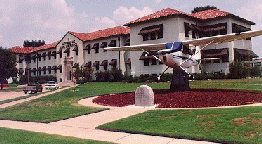

Civil Air Patrol Organization
|
The Civil Air Patrol is a civilian organization but, as the civilian Auxiliary of the U.S. Air Force, it comes as no surprise that it is organized along military lines. CAP is organized into eight geographic regions. These regions are subdivided by the states falling within their boundaries and each state has a CAP wing. Additionally, the District of Columbia and Commonwealth of Puerto Rico have CAP wings. These 52 wings are then subdivided into groups, squadrons, and flights depending on their size. There are more than 1,700 CAP units, half of which are composite squadrons or squadrons that have both senior and cadet members. The highest governing body of CAP is the National Board, chaired by a member of the CAP Corporation whose title is National Commander. This position is held by a CAP Brigadier General elected by the members. Other members of the Board include the eight region and 52 wing commanders. |
 |
This governing body also includes an elected National Vice Commander, Chief of Staff, Legal Officer, Finance Officer, and Controller - all civilian volunteers who have no active duty Air Force obligations or privileges. There is one key position on the National Board that ties the CAP Corporation to the U.S. Air Force - the Senior Air Force Advisor. The advisor's position is held by an active-duty Air Force Colonel who, in addition to serving as the Senior Air Force Adviser, is responsible for all active duty and DoD civilian employees who provide liaison oversight and advice to the CAP organization. In this capacity, the Senior Air Force advisor is also the CAP-USAF Commander. Sound confusing? It's really not. When Congress enacted Public Law 557 in 1948, they determined that active-duty Air Force personnel should be assigned to provide advice and assistance to the organization. Hence, Headquarters CAP-USAF was established.
| ŠAvStop Online Magazine Contact Us Return Home |